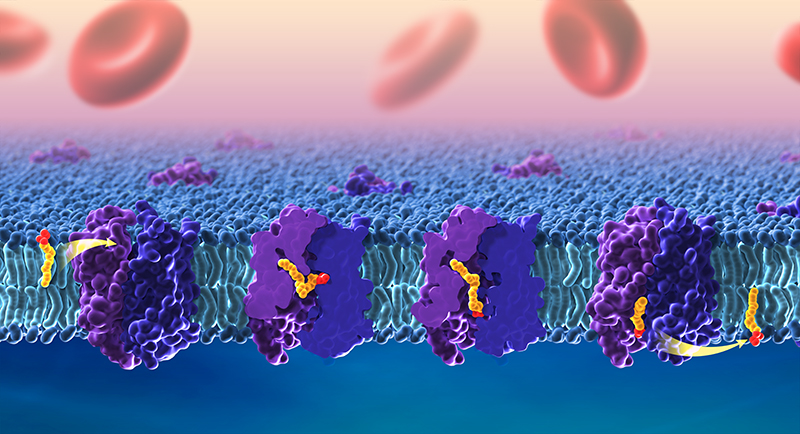Findings may aid design of targeted drug delivery into the brain and central nervous system

Credit: Ethan Tyler, NIH Medical Arts
WHAT:
Researchers at the National Institutes of Health and colleagues have developed a zebrafish model that provides new insight into how the brain acquires essential omega-3 fatty acids, including docosahexaenoic acid (DHA) and linolenic acid (ALA). Their findings, published in Nature Communications,have the potential to improve understanding of lipid transport across the blood-brain barrier and of disruptions in this process that can lead to birth defects or neurological conditions. The model may also enable researchers to design drug molecules that are capable of directly reaching the brain.
Omega-3 fatty acids are considered essential because the body cannot make them and must obtain them through foods, such as fish, nuts and seeds. DHA levels are especially high in the brain and important for a healthy nervous system. Infants obtain DHA from breastmilk or formula, and deficiencies of this fatty acid have been linked to problems with learning and memory. To get to the brain, omega-3 fatty acids must pass through the blood-brain barrier via the lipid transporter Mfsd2a, which is essential for normal brain development. Despite its importance, scientists did not know precisely how Mfsd2a transports DHA and other omega-3 fatty acids.
In the study, the research team provides images of the structure of zebrafish Mfsd2a, which is similar to its human counterpart. The snapshots are the first to detail precisely how fatty acids move across the cell membrane. The study team also identified three compartments in Mfsd2a that suggest distinct steps required to move and flip fatty acids through the transporter, as opposed to movement through a linear tunnel or along the surface of the protein complex. The findings provide key information on how Mfsd2a transports omega-3 fatty acids into the brain and may enable researchers to optimize drug delivery via this route. The study also provides foundational knowledge on how other members of this transporter family, called the major facilitator superfamily (MFS), regulate important cellular functions.
The study was led by Doreen Matthies, Ph.D., of NIH’s Eunice Kennedy Shriver National Institute of Child Health and Human Development (NICHD), and Tamir Gonen, Ph.D., of the University of California, Los Angeles. Additional funding for the study was provided by NIH’s National Institute of General Medical Sciences (NIGMS) and the Howard Hughes Medical Institute.
WHO:
Doreen Matthies, Ph.D., Head, and Louis Tung Faat Lai, Ph.D., postdoctoral fellow, Unit on Structural Biology, are available for interviews.
To arrange an interview with Dr. Matthies and/or Dr. Lai, please e-mail nichdpress@mail.nih.gov or call 301-496-5133.
REFERENCE:
Nguyen C., Lei H.-T., Lai L.T.F., et. al. Lipid flipping in the omega-3 fatty-acid transporter. Nature Communications DOI: 10.1038/s41467-023-37702-7 (2023)
###
About the Eunice Kennedy Shriver National Institute of Child Health and Human Development (NICHD): NICHD leads research and training to understand human development, improve reproductive health, enhance the lives of children and adolescents, and optimize abilities for all. For more information, visit https://www.nichd.nih.gov.
About the National Institutes of Health (NIH): NIH, the nation's medical research agency, includes 27 Institutes and Centers and is a component of the U.S. Department of Health and Human Services. NIH is the primary federal agency conducting and supporting basic, clinical, and translational medical research, and is investigating the causes, treatments, and cures for both common and rare diseases. For more information about NIH and its programs, visit https://www.nih.gov.

 BACK TO TOP
BACK TO TOP